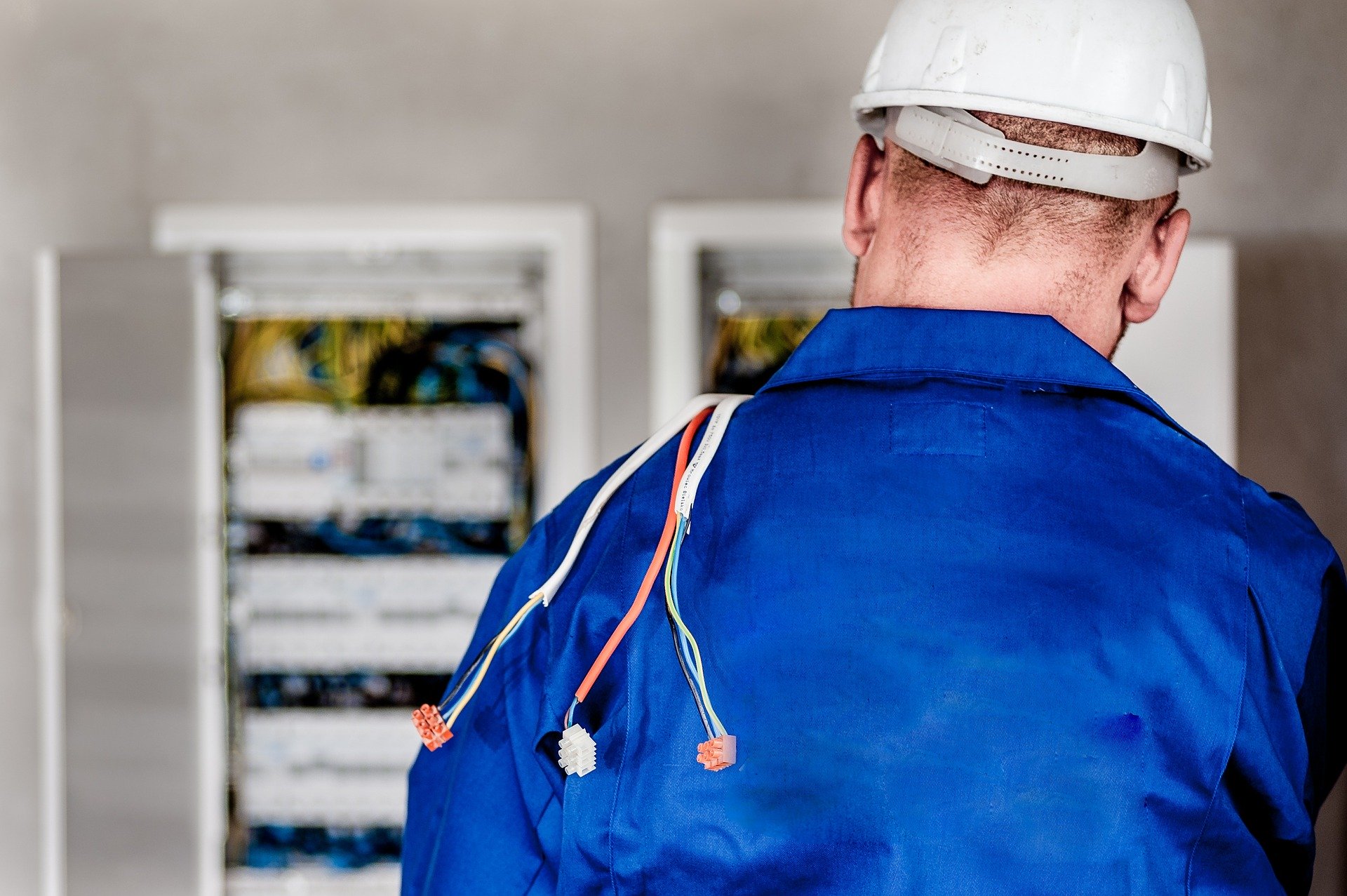What is an EICR?
EICR is the industry acronym for Electrical Installation Condition Report. The report shows the results of a whole-property assessment to ensure that all electrical systems and installations are safe, correctly installed and well maintained. Reports are written for industrial, commercial and domestic premises.
The assessments are made in line with UK standards for the safety of electrical installations, coded BS7671. The BS7671 schedule itemises the requirements for electrical installations as set out in the IET Wiring Regulations.
Some electrician websites refer to it as the Electrical Inspection Condition Report. The intention of this word swap appears to be to make the term more accessible for laymen who don’t know what counts as an ‘installation’, or whether or not their property requires a report at all
How do you know if you need one?
It might help if we list the different scenarios in which an inspection needs to be made, and a report produced.
When you want to buy a home
You will need to make sure that an EICR is carried out as part of the general inspection package that comes with the purchase of domestic properties. This wider package includes the gas safety certificate, the surveyor’s report and the CON29M mining report (if the home you have your eye on is in a coal belt). Now, the onus is on the seller to arrange the report and share the results with the buyer. However, it’s the buyer’s personal responsibility to ensure that they have seen the report and discussed the results with the seller before the exchange is made. You might want to negotiate the cost of undertaking some of the repairs depending upon how urgent the move is.
Once you’ve bought your home and placed your last plant pot in the right place, it’s recommended that you have your next report carried out in ten years. This is something that you will need to arrange with an electrician. If your home has a pool, then you will need to have the inspection carried out annually.
If you see something in the house that worries you, then you can book an EICR at any time.
If you’re a private landlord
You will need to have this report carried out annually, or with every change of occupancy. For example, if your report is scheduled to take place in September and your tenant moves on in June, then the report is brought forward and you won’t need the next one to be carried out until June the following year (unless you have another change of occupancy in the interim).
If you are becoming a landlord of a House of Multiple Occupancy, then any tenancies created as of 1st July 2020 will require an EICR to be carried out to make sure that the property is compliant with safety rules. If you’re an established HMO landlord with incumbent tenants, then you will need to have an assessment and report carried out before April 2021. Copies of the report must be available to the tenants. If remedial action needs to be carried out, then tenants are also entitled to see the copy of the EIRC Certificate of Safety once all necessary fixes have taken place.
Business owners need to have period inspections carried out every 3-5 years, depending upon the manner of the premises and the type of installations.
What are the consequences of not having an EICR carried out?
“Why should I have one?” is a commonly asked question about EICRs. The short answer is: you should have one done for your own safety and financial stability.
Let’s look at the legal requirements first. The requirement to have an EICR carried out is not embedded in statutory law, as with the Landlord and Tenant Act of 1985, or the Health and Safety at Work Act 1974. However, if a failure to carry out an EICR means that a tenant or employee is harmed because the property’s electricity installation is not compliant with the IET wiring regulations, then sanctions can be imposed under the legislation set out in the relevant act. For the report to be viable, the assessment needs to have been carried out using the most recent edition of the IET wiring regulations, which, as of August 2020, is edition 18. Assessments following outdated regulations and coding practices are non-compliant, and you’ll have to have the EIRC re-done.
The most significant consequences of not having an EICR carried out (and the remedial actions addressed) are serious physical harm to you, or severe damage to your finances to the point that you struggle to keep up with mortgage payments.
As a prospective homeowner, you should order an EICR to be carried out because until you exchange on a property, the responsibility for the condition of the place lies with the seller.
Let’s say you’ve spotted a bungalow in a leafy Surrey suburb and it’s in idyllic surroundings. It’s a fixer-upper, though, which requires a lot of cosmetic renovations. You know that you’ll have to get rid of that inventively horrid 70s carpet in the kitchen, take the black baize off the doors, and deal with that avocado bathroom suite. Those random mid-room wicker partitions can probably go as well. It’s a lot of work, but your budget is based on a labour of love. You decide you’ll move in, unpack, then get the electrics looked at before you do any heavy-duty renovations.
You make the exchange, pop the champagne, get the keys, and then follow the removal van to the bungalow. In the first week, you’re on the phone to your new energy supplier. You open the meter box and find not just exposed copper on the meter tails, but a cracked service head.
Over the succeeding weeks, you find more cracked sockets. More exposed wire. You didn’t see any of this before because the sockets were cunningly hidden behind vast oak Welsh dressers.
A quick run around the house with a socket outlet monitor reveals circuit breaks and transposed wiring. You call an electrician.
In a really unfair world, you could end up footing a bill of £2-4,000 for a complete rewiring job of the whole property, which should’ve been the responsibility of the previous owner. It’s a classic caveat emptor situation. You’ll have to postpone all your cosmetic adaptations to ensure the property is safe. In dire situations, where you’ve inadvertently bought an electric hell pit (compliant only with the unsafety regulations of the 9th circle), you may even need to move out until the repairs are complete.
The EICR process: What to expect as a homeowner
What the electrician will do
To carry out all sections of the test, the electrician will have to disconnect the electrics from the main power supply. They will carry out room-to-room visual and diagnostic inspections to check for faulty work which could result in system overload, correct bonding or earthing of installations, identifying fire hazards, and noting all circuit irregularities.
The installation inspection is broken down into 7 sections, each of which have a minimum of 20 indicators to check. Each indicator is allocated a code:
- C1 = Danger present with immediate remedial action required
- C2 = Potentially dangerous (urgent action required)
- C3 = Improvements recommended
- F1 = Further investigations required without delay.
- NA = Not Applicable
- L = Limitation
As the homeowner, you can apply limitations to parts of the inspection. For example, you want them to do everything but take up floorboards in a particular place. If your inspector is unable to check a particular item due to denied access, then they will mark L on their report. Conversely, they can impose their own limitations, such as refusing to go into a proposed mancave with rotten floorboards and a century’s worth of black mould. These limitations must be discussed and recorded in writing.
If the electrician observes a C1, C2 or F1 breach of safety on any individual check, then they are obliged to return a report that the electric installations are unsatisfactory.
To give you an idea of the breadth of the EICR, the inspection covers the following seven sections:
- Section 1: External condition of intake equipment (cabling, condition of the meter box, and so on)
- Section 2: Adequate arrangements for other power sources such as microgenerators (solar power sources are one example of microgenerator)
- Section 3: Earthing and bonding arrangements (presence and condition of distributor’s earthing arrangements, confirmation of the earthing conductor size, condition and accessibility of the main protective bonding conductor connections, and so on).
- Section 4: Distribution boards and consumer units (adequacy of working space and accessibility to units, security of the fixings, condition of the enclosures in terms of fire rating, and so on).
- Section 5: Distribution and Final Circuits (Are non-sheathed cables protected by enclosures? Are live parts insulated to an adequate degree? Do conductors and overload protective devices coordinate properly?)
- Section 6: Locations Containing a Bath or Shower (suitability of current, distance between sockets and water supplies, etc)
- Section 7: Other special installations or locations (E.g. sauna rooms, demolition sites, swimming pools, caravan sites, and elaborate sheds/end-of-garden offices)
As you can see, the inspection is very thorough.
How long does it take?
The onsite inspection of an average 3-bedroom house might take around three hours. 2-5 hours can be expected depending upon the size and age of the property, and when it was last inspected or renovated.
They will then need to formally record their report and make sure everything is accurate, clear and tidy. This could take up to a day’s work depending upon the complexities.
How much does it cost?
For the time taken for the inspection and the provision of the report itself, you can expect to pay anywhere between £100 and £150 (plus VAT).

